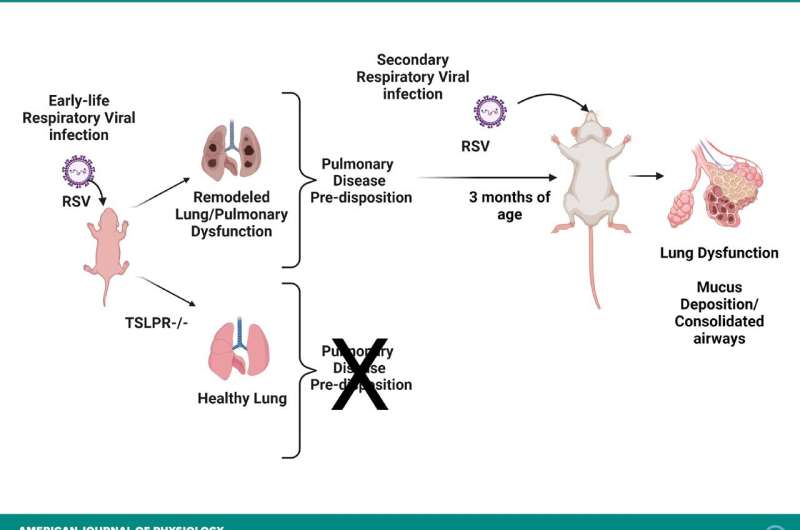This article has been reviewed according to Science X's editorial process and policies. Editors have highlighted the following attributes while ensuring the content's credibility:
fact-checked
trusted source
proofread
Contracting RSV before age two can cause long-term lung changes and impairment

Infants and children who have severe cases of respiratory syncytial virus (RSV) before age 2 are likely to have changes to their lung structure and function that could affect respiratory health later in life.
The study, "Early-life pulmonary viral infection leads to long-term functional and lower airway structural changes in the lungs," is published ahead of print in the American Journal of Physiology-Lung Cellular and Molecular Physiology.
Most children contract RSV, a lower respiratory tract disease, before they are 2 years old. Mild forms of the disease mimic the common cold with symptoms such as coughing, runny nose, congestion and sneezing. Severe forms of RSV can include wheezing, trouble breathing and, when oxygen levels are compromised, a blue tinge to the skin.
A severe infection can affect a child's future health as well. "Severe early-life RSV infection is associated with childhood wheezing related to respiratory viral infection exacerbation, allergies and asthma, that is accompanied by compromised lung function," the researchers wrote.
To study severe RSV, the researchers measured lung function and alveolarization in infant mice. Alveolarization is the development of alveoli, the sacs in the lungs responsible for exchanging oxygen and carbon dioxide. "Alveolarization continues into adulthood with maximum alveolarization occurring between [2 and 3 years old] in humans," the team wrote. Production of large numbers of immune cells occurs around the same time.
The researchers measured these markers at five weeks and three months after the initial RSV infection and again after a reinfection with the virus. They found "significant defects" in the ability of the lungs to stretch and expand during breathing. Structural changes to the mice's lungs included an increase in alveoli size but fewer individual alveoli after RSV infection.
"These data indicate that the lungs of mice following an early-life RSV infection have a decreased lung function even at [three months] post infection," the research team wrote. "Importantly, the structural defects of the early-life infected mice largely mimic the clinical setting where severe exacerbations are observed in children for several years following a severe early-life respiratory infection, especially RSV."
More information: Carrie-Anne Malinczak et al, Early-life pulmonary viral infection leads to long-term functional and lower airway structural changes in the lungs, American Journal of Physiology-Lung Cellular and Molecular Physiology (2024). DOI: 10.1152/ajplung.00300.2023





















